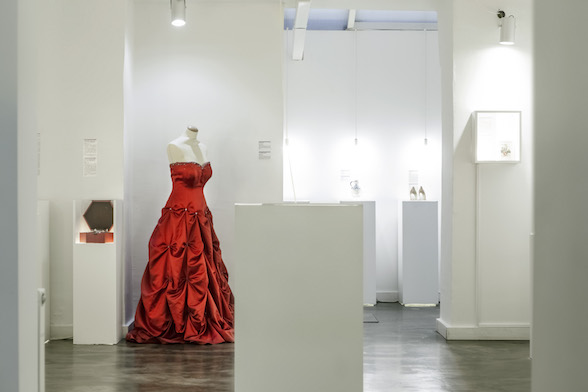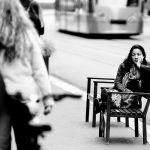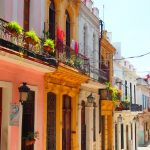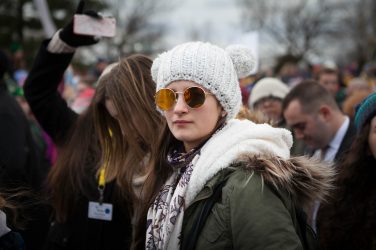E&M wondered what possesses someone to immortalise a break-up. To find out more, Victoria Jordan and Nicoletta Enria had a chat with a curator at the Museum of Broken Relationships.
E&M: Can you tell us a bit more about yourself, and your role within the museum?
My name is Rebeka Knajs. I have been working at the Museum of Broken Relationships as Collection manager and traveling exhibitions assistant for one year now. My main job responsibilities include documentation of donations and assisting in communicating terms and conditions of collaboration with museum’s international hosts.
E&M: Why was the museum set-up and what was its main purpose?
The Museum of Broken Relationships started in 2006 as a joint-author art project of a former couple – Olinka Vištica, a producer in the domain of cultural projects with considerable international experience and Dražen Grubišić, a versatile artist with a BFA in painting. It was born out of a personal experience of trying to save, transform and ultimately overcome the breakdown of their relationship. It was one of those simple ideas that come to one’s mind in plain conversation. What to do with all those tokens of love, material and immaterial, that you collected during your relationship? Wouldn’t it be great if there was a museum of a kind that could help you store it for some time?
The museum started from a simple idea to store all the painful triggers of memories around us, thus creating a safe place for both tangible and intangible heritage of past relationships. It seemed a nicer, more poetic solution compared with giving into outbursts of emotional vandalism that are bound to destroy invaluable parts of our intimate history. It offers a chance for everyone to do something about the feelings of loss and loneliness – to be creative in order to recover from that pain. It offers an opportunity to get rid of the emotional burden and the universal context of similar experiences helps convalescence and well-being and seems to have a cathartic effect. It works for both donators and visitors.
Once the idea had fully formed itself and elicited enthusiastic responses from friends, it slowly began its transformation into reality. The museum’s first exhibition took place in Zagreb in 2006. A shipping container was used as a vessel to display a small collection of objects donated by friends and acquaintances. Quite unsuspecting of the interest the art project would generate, Olinka and Drazen soon found themselves organizing exhibitions both in Croatia and abroad. What began as a travelling exhibition has turned into a museum with a permanent display in Zagreb in 2010.

E&M: What kind of reactions or feedback have you received from visitors?
Stating the obvious, different people react differently to the exhibition depending on their own personal experience of love and loss. Over the years only a handful have asked for handkerchiefs when leaving the museum and I distinctly recall one woman suggesting we provide the service of free hugs to visitors shaken up by the exhibits. Sometimes the silence of the exhibition is broken by a sudden giggle roused by one of our humorous stories; at times couples leave the museum holding on to one another more tightly then they usually do. Almost all feel the need to write down their impressions of the exhibition and every now and then the guest books in our ‘Confessional’ are enriched by an intimate story shared by a moved visitor.
E&M: We also notice that this is such an international project, taking place in Alta in Norway, Zagreb in Croatia and many exhibitions worldwide – is this transnational element important to your work?
Besides the permanent display in Zagreb, the Museum of Broken Relationships continuously functions as a travelling museum. Since its beginnings in 2006 the exhibition has travelled to 29 countries visiting 45 cities worldwide and, as you already mentioned, the itinerant exhibition gave birth to the permanent museum in Zagreb – our permanent display actually consists of emotional gems collected during our travelling exhibitions all around the world.

Basically, the two basic differences are the temporality of the travelling exhibitions and the fact that, besides or existing international collection, on each local exhibition we exhibit regionally collected donations. There is a call for donations a few months prior to the opening of the exhibition and the local population are invited to donate their objects for the temporary display. Once the exhibition finishes, all of the donations are taken back to Zagreb.
We go wherever someone invites us. Of course, during the last eleven years of travelling we have established some basic criteria that have to be met in order to realise the exhibition and this is something that we try to achieve in collaboration with our local partners.
This moving assortment of cathartic objects of lost love became the building blocks of a social museum capable not only of safeguarding but also of communicating the collective and personal emotional heritage. Our ever growing itinerary enables the museum to enrich its collection not only in terms of the increasing number of exhibits but also in terms of social, cultural and historical content inherent to its symbolic objects and stories whose multiple references often outgrow the pure intimate experience of the two protagonists.

E&M: Do people in different national contexts have very different reactions to the work? Would you say this kind of initiative provides a healing and open dialogue on heart-break, beyond the Hollywood stereotypes?
Undoubtedly when leaving the museum one thought will be firmly embossed in the visitor’s mind, the recognition of how alike people really are when it comes to matters of love and pain – regardless of race, nationality, religion, sex and cultural background. There is comfort in knowing that we all go through the same rollercoaster of emotions when it comes to love, its highs and its lows. It’s almost too easy at times to convince ourselves that we suffer more than others or experience things differently than anyone else. And whereas all our circumstances do differ, when reading the stories we realise that we are not ‘alone and special’ in our suffering and our joy. A person might come out more grateful for the love they have or have had, or might realise that there is more to be had. In a way the museum offers an exchange of experiences and it is up to every single one of us to draw our own conclusions about the nature of human relationships in general.
ABOUT THE MUSEUM FOUNDERSOlinka Vištica was born in Split (Croatia) in 1969. After graduating from English and French language and literature at the Faculty of Humanities of the Zagreb University, she takes up a post graduate Master in Cultural Management ECUM-ECUMEST in Dijon and Bucarest. After a year long internship at the Centre choregraphique de Seine Saint Denis in Paris she collaborates with French choreographer Kilina Cremona on several contemporary dance projects in Zagreb. In 1999 she joins the creative team of the successful Int. Motovun Film Festival in Croata, and from 2003 to 2005 works as the festival director. In 2006 she founds her independent production company Hulahop which is currently developing several film and art projects. She is coauthor and producer of the art project “Museum of Broken Relationships”. Dražen Grubišić was born in Zagreb in 1969. After a year at the Academy of Fine Arts in Lawrence (USA), he continues his art education at the Academy of Fine Arts in Zagreb where he graduates in 1994 in the class of Zlatan Vrkljan. At the IKM Institute in Vienna he takes up a post-graduate course in arts management. He starts to exhibit his work in 1989 and takes part in numerous individual and group exhibitions and projects, in Croatia and abroad. Winner of several prizes: Rectors Award of the Zagreb University (1994), Grand Prix of the Zagreb Youth Salon (1996) and Golden Arena for the Best Set Design in the film “Mondo Bobo”, at the Pula Film Festival (1997). |
Teaser Photo Photo Courtesy of the Museum of Broken Relationships by Mare Milin










